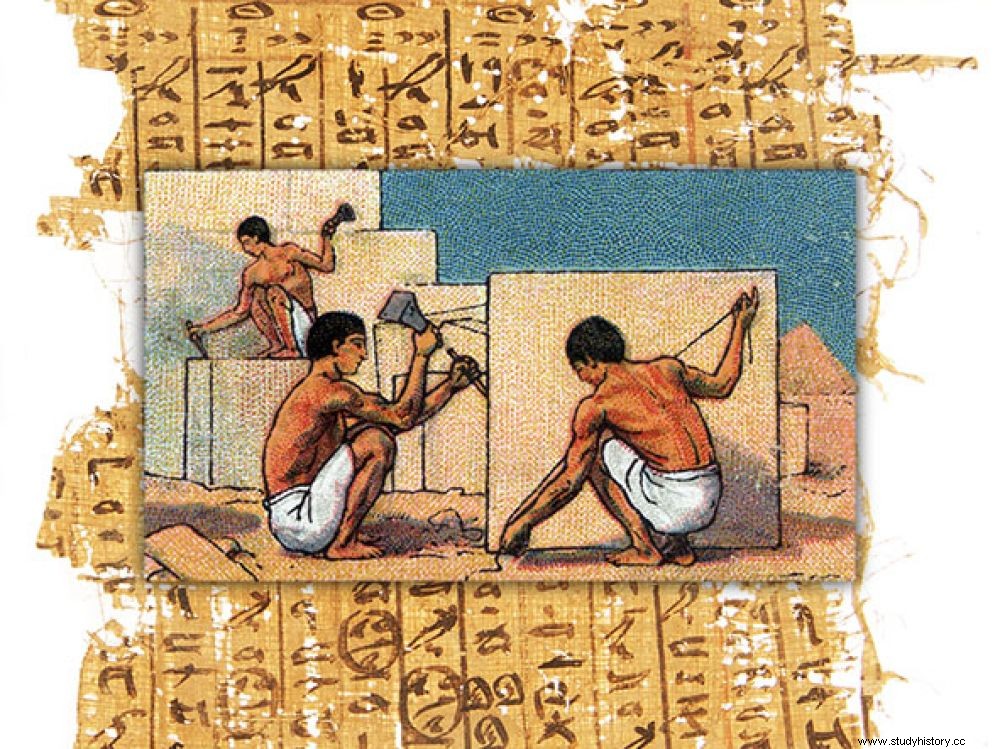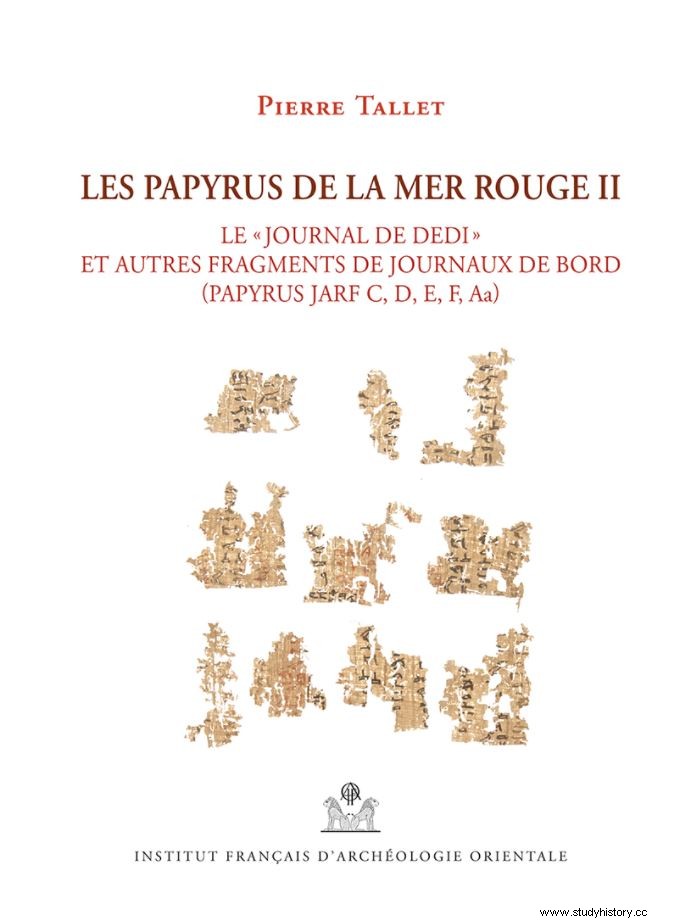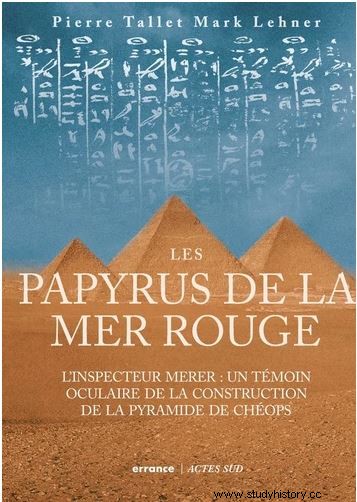After the extraordinary discovery of the "Red Sea papyri" and the revelation of the "Journal of Merer" which for the first time provided unprecedented information on the daily life of the builders of the Great Pyramid of Cheops, in Egypt, two books have just been published in quick succession by the French Egyptologist Pierre Tallet.

The "Red Sea Papyri" are one of the greatest archaeological discoveries of the 20 th century. The oldest papyri in the world, they have delivered an unknown part of the daily life of the builders of the Cheops pyramid, with unpublished information on the teams of quarry workers involved in these monumental works.
With the papyri exhumed between 2013 and 2017 on the site of Ouadi el-Jarf, on the western coast of the Gulf of Suez, in Egypt, the French archaeologist Pierre Tallet, their inventor, continues his work on these discoveries considered to be among the most important of the 20 th century. He thus unveiled invaluable documents, the first direct testimony ever found on the construction of the "Horizon of Cheops", the name then given to the Great Pyramid erected for the ruler of the Old Empire!
These papyri are 4,600-year-old archives
Considered the oldest papyri in the world, these 4,600-year-old archives included several logbooks, of which a first translation (volume 1) was published in 2017:the Journal de Merer described in an unprecedented way how blocks of limestone were transported to Giza for the construction site of the Great Pyramid of Cheops. But no less than five logbooks, numbered from A to F by Pierre Tallet, were among the thousand confetti of papyri collected on the shores of the Red Sea and the sands of Ouadi el-Jarf, the ancient port of Pharaoh Cheops (IV th dynasty). A puzzle that this specialist, professor at the University of the Sorbonne in Paris, first patiently reconstructed, before undertaking the translation disclosed today in a volume 2 intended for enlightened amateurs and hieroglyphics enthusiasts.

Papyrus of the Red Sea, "The Diary of Dedi", Volume II. © Pierre Tallet/IFAO
Recall that the Journal de Merer (papyrus A and B) described unknown supply campaigns for the Great Pyramid site and operations to commission and maintain the canals serving the hydraulic basin at the foot of the Giza plateau. On board cargo ships, the writings made it possible to follow the activities of four teams (phylés) -La Grande, L'Asiane, La Prospère and La Petite-, during the transport of loads of limestone between the Toura quarries, located along the Nile, to the site of the pyramids. La Grande, headed by Inspector Merer, evolved during the flooding of the Nile, between the Akhet and Peret seasons, i.e. between the months of August and November, the only time of the year when the water level allowed transport of heavy loads from one bank to the other of the river bed (read Sciences et Avenir "Révélations sur Khéops" n° 857).
A sprawling system of which the constructions of Giza were the center
"With papyri C, D, E, F, Volume 2 now includes all the other fragments belonging to the various logbooks. And Inspector Merer seems to have given way to another responsible, the scribe Dedi, character who seems to oversee the entire workforce", explains Pierre Tallet to Sciences et Avenir . "In papyrus D, we see that most of the missions concern the various teams engaged in multiple daily tasks in order to supply the temple of the valley and the royal palace of the architectural complex of Cheops, that of Ânkhou -Khoufu ( May Cheops live)", continues the expert. A theme amply developed in the popular book co-authored with Mark Lehner, expert on the Giza Plateau, to be published on November 11, 2021:The Red Sea Papyri:Inspector Merer:An Eyewitness to the Construction of the Pyramids .

After devoting the first part of this book to the journey that led him from the Sinai Peninsula to the shores of the Red Sea, the Egyptologist Pierre Tallet discusses at length the discovery of the port complex of Ouadi el Jarf, that of the papyri, their restoration and translation. He then establishes links between the information attested by his exceptional finds and those carried out at Heit el-Gourob by the American Mark Lehner on the side of the pyramids of Giza where for more than 20 years, he searched the dwellings of the builders, these squads workers identical to those driven by Merer or Dedi. "Confronting these data has made it possible to better understand the organization of the royal palace located near the construction site of the pyramid, - the heart of the pharaonic state under the reign of Cheops" , declares Pierre Tallet. A system with sprawling functioning of which the constructions of Giza were the center and which the papyri of the Red Sea have revealed.
The Red Sea Papyri, Dedi's Journal , Pierre Tallet, vol. 2, papyrus Jarf C,D,E,F. Ifao, Cairo, 2021.
The Red Sea Papyri:Inspector Merer:An Eyewitness to the Construction of the Pyramids s, Pierre Tallet, Mark Lehner, editions Errance Actes Sud, 320p.
